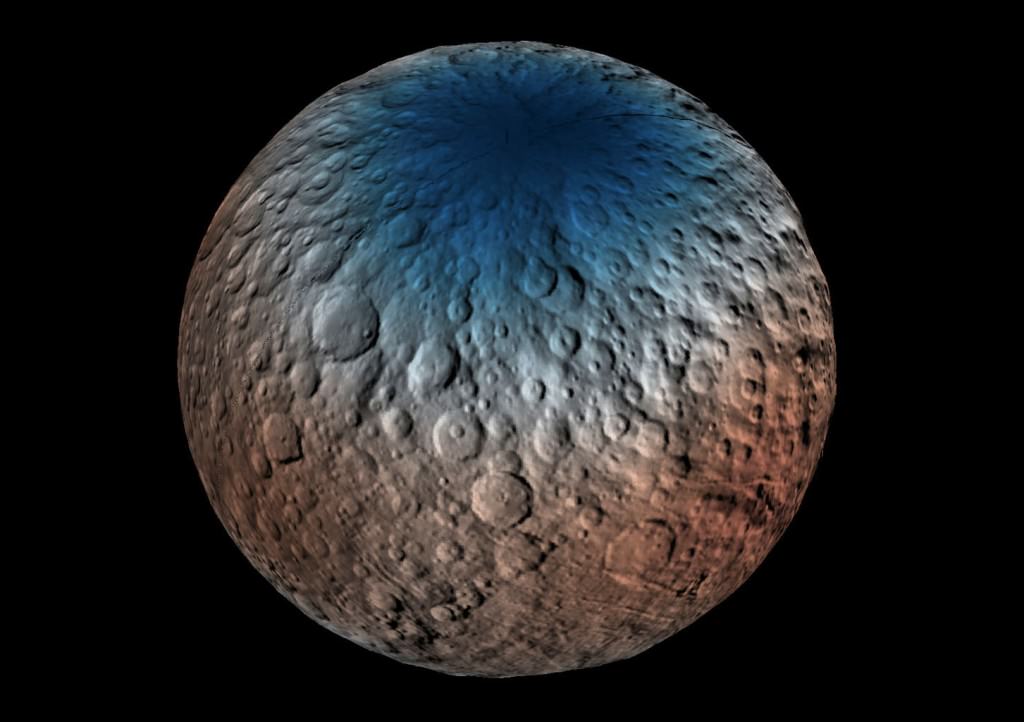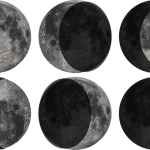- Exploring the Dwarf Planet Ceres: A Brief History of Missions to the Asteroid Belt
- Ceres: The Largest Object in the Asteroid Belt
- What We Know About Ceres’ Composition and Surface Features
- The Mystery of Ceres’ Bright Spots: What Causes Them?
- Ceres’ Potential for Habitable Environments: Could Life Exist on the Dwarf Planet?
- Mining the Dwarf Planet: Could Ceres Be a Source of Valuable Resources?
- Ceres and the Dawn Mission: How NASA’s Spacecraft Studied the Dwarf Planet Up Close
- The Geology of Ceres: Exploring Its Craters, Mountains, and Valleys
- The Role of Ceres in Our Solar System: What Can This Dwarf Planet Tell Us About Planetary Formation?
- Ceres’ Moons: An Overview of the Dwarf Planet’s Satellites and Their Characteristics.
Explore the Dwarf Planet Ceres
The asteroid belt between Mars and Jupiter is a fascinating region of our solar system, containing millions of rocky and metallic objects. Among them, Ceres stands out as the largest and closest dwarf planet to Earth, with a diameter of about 590 miles (940 kilometers). Discovered in 1801 by Italian astronomer Giuseppe Piazzi, Ceres has captured the imagination of scientists and space enthusiasts alike, who have sent several missions to study its properties and history.
In this blog post, we’ll take a closer look at the brief history of missions to the asteroid belt and Ceres, highlighting their discoveries and achievements.
Pioneer 10 and 11 (1972-1973):
These two spacecraft were the first to explore the outer solar system, including Jupiter and its moons, before continuing towards the edge of the asteroid belt. Although they didn’t fly close to Ceres, they provided important data on the gravitational forces and radiation environment of the region.
Vega 1 and 2 (1984):
These Soviet-built probes were designed to study Halley’s comet, but they also passed near the asteroid belt and detected several small bodies, including Ceres. Their measurements of the asteroid’s thermal emission and surface reflectivity suggested the presence of ice and hydrated minerals, sparking interest in future missions.
Galileo (1991-2003):
This NASA spacecraft was primarily focused on exploring Jupiter and its four largest moons, but it also performed a flyby of Ceres on its way to the gas giant. The encounter provided valuable images and spectra of the asteroid’s surface, revealing a heavily cratered terrain and signs of water ice near its poles.
Dawn (2007-2018):
Launched by NASA, the Dawn mission was the first to orbit and study Ceres up close. After a four-year journey through the asteroid belt, the spacecraft arrived at Ceres in 2015 and spent over three years mapping its surface, measuring its gravity, and analyzing its composition. Among its discoveries, Dawn found evidence of a subsurface ocean, bright spots of sodium carbonate, and cryovolcanic activity that reshaped some of the asteroid’s features.
Ceres: The Largest Object in the Asteroid Belt
The asteroid belt between Mars and Jupiter is home to a vast population of rocky and metallic bodies, ranging in size from tiny pebbles to large asteroids. Among them, Ceres stands out as the largest object in the region, with a diameter of about 590 miles (940 kilometers). Discovered in 1801 by Italian astronomer Giuseppe Piazzi, Ceres has fascinated scientists and space enthusiasts ever since, thanks to its unique properties and potential for scientific exploration.
In this blog post, we’ll take a closer look at Ceres and its characteristics, highlighting what makes it such a special object in our solar system.
Size and composition:
As mentioned, Ceres is the largest object in the asteroid belt, accounting for about one-third of the total mass of all asteroids combined. Its size and density suggest that it is composed mainly of rock and metal, similar to the terrestrial planets in the inner solar system. However, recent data from the Dawn spacecraft suggest that Ceres also contains significant amounts of water ice and other volatiles, which may be located in subsurface layers or frozen on the surface.
Shape and surface features:
Ceres is roughly spherical in shape, with a slightly flattened pole and a heavily cratered surface. It also has several distinctive features, such as the bright spots in its Occator crater, which are thought to be deposits of sodium carbonate or other salts. Other features include mountains, valleys, and plains, some of which may be related to cryovolcanism or other geological processes.
Potential for habitable environments:
While Ceres is unlikely to have a thick atmosphere or a magnetic field to protect it from solar radiation, some scientists have suggested that it could harbor subsurface oceans or other habitable environments. This is based on the detection of water ice and hydrated minerals on its surface, as well as the presence of organic molecules and amino acids, which are building blocks of life.
Exploration and future missions:
Ceres has been the target of several missions in the past, including the Dawn spacecraft, which orbited and studied the asteroid up close from 2015 to 2018. Other missions, such as the Japanese Hayabusa2 and the European Space Agency’s Hera, are planned for the near future, with the goal of further investigating Ceres’ composition, geology, and potential for resources.
What We Know About Ceres’ Composition and Surface Features
Ceres, the largest object in the asteroid belt, has long been a subject of fascination for scientists studying our solar system. Its unique composition and surface features provide valuable insights into the formation and evolution of small bodies in our celestial neighborhood. In this blog post, we’ll explore what we know about Ceres’ composition and surface features and what they tell us about the history of our solar system.
Composition
Ceres’ composition has been studied extensively through ground-based observations and data collected by spacecraft such as NASA’s Dawn mission. From these observations, we know that Ceres is composed primarily of rock and ice, with a significant amount of water ice located in its subsurface layers. In fact, Ceres is thought to contain more water than all the fresh water on Earth.
In addition to water ice, scientists have detected other minerals on Ceres’ surface, including carbonates and clays. These minerals suggest that Ceres underwent significant chemical and geological processes during its formation and history.
Surface Features
Ceres’ surface features are equally fascinating and varied. The asteroid’s surface is heavily cratered, indicating a long history of impacts from other bodies in the asteroid belt. However, there are also several other unique features that have captured scientists’ attention.
One of the most striking features on Ceres is the bright spots in the Occator crater. These bright spots are thought to be deposits of sodium carbonate or other salts, and they offer insights into the asteroid’s geology and chemical composition.
Ceres also has a large mountain, Ahuna Mons, which rises about 13,000 feet (4,000 meters) above the surrounding plains. The mountain is thought to be a cryovolcano, meaning it is made up of icy material that was expelled from the asteroid’s interior.
What it tells us
Studying Ceres’ composition and surface features provides valuable information about the formation and evolution of small bodies in our solar system. For example, the presence of water ice and other volatile materials on Ceres suggests that these materials were present in the early solar system and were incorporated into the asteroid during its formation. This, in turn, has implications for the origin of water and other volatiles on Earth and other planets.
Ceres’ surface features also provide insights into the asteroid’s geological history. For example, the bright spots in the Occator crater suggest that there may be subsurface briny water on Ceres, which could have played a role in the formation of the bright deposits.
The Mystery of Ceres’ Bright Spots:
Ceres, the largest object in the asteroid belt, has captured the attention of scientists since its discovery in 1801. One of the most intriguing features on Ceres is the presence of bright spots in the Occator crater, which were first observed in 2015 by NASA’s Dawn spacecraft. In this blog post, we’ll explore the mystery of Ceres’ bright spots and what might be causing them.
What are the bright spots?
The bright spots on Ceres are located within the Occator crater, which is approximately 60 miles (90 kilometers) wide and 2.5 miles (4 kilometers) deep. The bright spots were first detected by the Dawn spacecraft’s framing camera, which captured high-resolution images of the asteroid’s surface. The spots are highly reflective and appear to be composed of a material that is different from the surrounding surface.
Possible causes
There are several theories about what might be causing the bright spots on Ceres. One of the leading theories is that the spots are deposits of sodium carbonate or other salts, which are highly reflective and could have been deposited on the surface by briny water that seeped up from the asteroid’s interior.
Another theory is that the bright spots are caused by impact melts, which are formed when an asteroid collides with another object. In this scenario, the bright spots would be composed of material that was melted by the impact and then cooled rapidly, creating a highly reflective surface.
A third theory is that the bright spots are caused by cryovolcanism, which is the eruption of icy material from a planetary body. This theory suggests that the bright spots could be deposits of frozen carbon dioxide or other volatiles that were expelled from Ceres’ interior through cryovolcanic activity.
Implications for planetary science
The mystery of Ceres’ bright spots has important implications for our understanding of the formation and evolution of small bodies in our solar system. If the bright spots are caused by briny water or other volatiles, this could provide valuable insights into the origin of water and other volatile materials in the solar system. It could also suggest that Ceres had a warm, subsurface ocean at some point in its history.
If the bright spots are caused by impact melts or cryovolcanism, this would also provide important information about the geological processes that have shaped Ceres and other small bodies in the asteroid belt. It could also help scientists to better understand the distribution and properties of volatiles in the early solar system.
Ceres’ Potential for Habitable Environments:
Ceres, the largest object in the asteroid belt, has long been a target of scientific study due to its unique composition and intriguing surface features. One of the most exciting questions surrounding Ceres is whether it could harbor environments that are hospitable to life. In this blog post, we’ll explore the potential for habitable environments on Ceres and what it could mean for the search for extraterrestrial life.
The case for habitability
Ceres has several characteristics that make it an interesting candidate for habitable environments. One of the most compelling factors is the presence of water ice on the surface. In 2015, NASA’s Dawn spacecraft detected bright spots within the Occator crater that were later confirmed to be deposits of hydrated sodium carbonate, indicating the presence of water.
Additionally, recent studies have suggested that Ceres could have a subsurface ocean, similar to Jupiter’s moon Europa and Saturn’s moon Enceladus. The presence of a subsurface ocean could provide a habitat for microbial life, as it does on these moons.
Challenges to habitability
While the presence of water and a subsurface ocean suggest the potential for habitable environments on Ceres, there are several challenges that must be overcome for life to exist on the dwarf planet. One of the biggest challenges is the lack of sunlight. Ceres is located in the outer regions of the solar system, which means that it receives only a fraction of the sunlight that Earth does. This could make it difficult for photosynthesis-based life forms to thrive on the surface.
Additionally, the temperatures on Ceres are extremely cold, with an average temperature of -100 degrees Celsius. This could make it difficult for life to survive on the surface without a protective shield or other adaptations.
Implications for the search for life
The potential for habitable environments on Ceres has important implications for the search for extraterrestrial life. If life is found on Ceres, it would provide strong evidence that life can exist in a wide range of environments, including those that are cold and receive little sunlight.
Additionally, the discovery of life on Ceres could provide clues about the origin and evolution of life in the universe. If life exists on Ceres, it would suggest that life may be more common in the universe than previously thought, and that it could arise in a variety of conditions.
Mining the Dwarf Planet:
Ceres, the largest object in the asteroid belt, has attracted attention not only from scientists but also from space entrepreneurs interested in the possibility of mining the dwarf planet for valuable resources. In this blog post, we’ll explore the potential for mining on Ceres and what it could mean for space exploration and industry.
What resources could be found on Ceres?
Ceres is known to have a significant amount of water ice on its surface, which could be used as a source of water for future space missions. Water can be broken down into hydrogen and oxygen, which are key components for rocket fuel. In addition to water, Ceres is also thought to contain other valuable resources such as minerals and metals, including iron, magnesium, and aluminum.
Challenges to mining on Ceres
While the potential for resources on Ceres is exciting, there are several challenges that must be overcome for mining to be feasible. One of the biggest challenges is the high cost of space exploration and the development of technology needed for mining in space. The mining process on Ceres would require drilling and extracting resources, as well as transporting them back to Earth or to other destinations in space.
Another challenge is the lack of an established legal framework for mining in space. While some countries have passed laws allowing private companies to mine asteroids, there is still much debate and uncertainty around the legality of such activities.
Potential benefits of mining on Ceres
If mining on Ceres becomes feasible, it could have significant benefits for space exploration and industry. The availability of water on Ceres could reduce the cost and complexity of future space missions by providing a source of fuel and drinking water. Additionally, the mining of minerals and metals could provide a source of resources for space habitats and infrastructure, which could lead to the development of self-sustaining space colonies.
Mining on Ceres could also have economic benefits for companies involved in space exploration and industry. The resources found on Ceres could be used for commercial purposes such as the production of materials for space construction, which could open up new markets and industries.
Ceres and the Dawn Mission: How NASA’s Spacecraft Studied the Dwarf Planet Up Close
In 2007, NASA launched the Dawn spacecraft to study two of the largest objects in the asteroid belt: Vesta and Ceres. While the spacecraft provided valuable insights into both objects, its mission to Ceres was particularly noteworthy due to the unprecedented level of detail that it provided about the dwarf planet. In this blog post, we’ll explore how the Dawn mission enabled us to learn more about Ceres than ever before.
Dawn’s journey to Ceres
After studying Vesta for more than a year, Dawn began its journey to Ceres in 2012. It entered into orbit around the dwarf planet in March 2015, marking the first time that a spacecraft had orbited a dwarf planet. Dawn remained in orbit around Ceres for more than three years, collecting data and capturing images of the planet’s surface.
What did Dawn discover about Ceres?
During its mission to Ceres, Dawn provided a wealth of information about the dwarf planet’s composition, surface features, and geology. One of the most significant discoveries was the presence of bright spots on the surface of Ceres, which were initially a mystery to scientists. Dawn’s instruments revealed that these spots were made up of sodium carbonate, a type of salt, and suggested that they may have been created by the presence of water on Ceres’ surface.
Dawn also discovered evidence of cryovolcanism, or the eruption of icy materials from the planet’s interior. This process is thought to have created the large craters and mountains on Ceres’ surface. In addition, Dawn’s data revealed that Ceres has a differentiated interior, with a rocky core and an icy mantle.
The legacy of the Dawn mission
The Dawn mission to Ceres provided a wealth of information about the dwarf planet and helped to revolutionize our understanding of the asteroid belt. Its data and images have been used to create detailed maps of Ceres’ surface, which have helped scientists to identify potential landing sites for future missions. Dawn’s discoveries about the presence of water and other materials on Ceres have also increased interest in the possibility of mining the dwarf planet for resources.
The Geology of Ceres: Exploring Its Craters, Mountains, and Valleys
Ceres, the largest object in the asteroid belt, is a fascinating world with a rich geology that tells the story of its formation and evolution. From its towering mountains to its deep valleys and impact craters, Ceres’ surface is a testament to the forces that have shaped it over billions of years. In this blog post, we’ll explore the geology of Ceres and what it can tell us about this enigmatic dwarf planet.
Impact craters
Like many bodies in the solar system, Ceres’ surface is covered in impact craters, which are scars left behind by collisions with other objects. These craters come in a range of sizes, from small pockmarks to large basins hundreds of kilometers across. By studying the distribution and morphology of these craters, scientists can learn about the frequency and intensity of impacts on Ceres over time.
Mountains and valleys
One of the most striking features of Ceres’ surface is its mountainous terrain, including the tallest mountain on the planet, Ahuna Mons. Scientists believe that these mountains were formed by cryovolcanism, a process by which icy materials erupt from the planet’s interior and build up over time. In addition, Ceres has several deep valleys, such as the Haulani and Occator Valles, which were likely formed by tectonic activity or the collapse of underground cavities.
Salt flats and bright spots
Ceres’ surface is also marked by large salt flats and bright spots, which are composed of sodium carbonate and other materials. These features are thought to be the result of the interaction between water and rock on Ceres’ surface, which creates a briny solution that can evaporate and leave behind deposits of salt. The bright spots, in particular, have been the subject of much fascination and speculation, with some scientists suggesting that they could be evidence of past or present subsurface oceans.
The role of water
Water has played a crucial role in shaping Ceres’ geology over time. Evidence of cryovolcanism and the presence of hydrated minerals on the planet’s surface suggest that water has been present in some form throughout much of Ceres’ history. The discovery of the bright spots and other features associated with water has also fueled speculation about the possibility of habitable environments on the planet.
The Role of Ceres in Our Solar System
Ceres, the largest object in the asteroid belt, is a fascinating world that has much to teach us about the formation and evolution of the planets in our solar system. Despite its small size and relative obscurity, Ceres is a key player in the ongoing story of planetary science. In this blog post, we’ll explore the role of Ceres in our solar system and what it can tell us about the processes that shape our celestial neighborhood.
The building blocks of planets
Ceres is a remnant of the protoplanetary disk that surrounded the young sun over 4.5 billion years ago. As such, it provides a unique window into the earliest stages of planetary formation. Scientists believe that Ceres and other objects in the asteroid belt are the building blocks of planets, with their composition and structure reflecting the conditions of the early solar system.
Water and habitability
Ceres is also significant for its potential as a habitat for life. Scientists have detected evidence of water on the planet’s surface, as well as hydrated minerals and organic molecules. This suggests that Ceres may have a subsurface ocean, and raises the possibility that life could exist there. By studying Ceres’ geology and composition, scientists can gain insights into the conditions necessary for habitable environments, and how these conditions may have been present elsewhere in the solar system.
Planetary evolution
Ceres’ geology also provides clues about the processes that have shaped the planets in our solar system over time. By studying the planet’s surface features, such as its impact craters, mountains, and valleys, scientists can learn about the frequency and intensity of impacts on Ceres, as well as the mechanisms that drive tectonic activity and other geological processes. These insights can help us to understand how planets evolve over time, and the factors that influence their ultimate fate.
The search for extraterrestrial life
Finally, Ceres has the potential to shed light on the search for extraterrestrial life. As scientists continue to study the planet’s composition and search for signs of water and other essential ingredients for life, they are expanding our understanding of the conditions necessary for habitable environments. By studying Ceres, we may be able to gain insights into the prospects for life on other planets and moons in our solar system, as well as the potential for life to exist elsewhere in the universe.
Ceres’ Moons:
In addition to being the largest object in the asteroid belt, Ceres is also orbited by a handful of small moons. These satellites, known as Pallas, Hygiea, and Vesta, are intriguing objects in their own right, and studying them can help us to understand the history and composition of the dwarf planet they orbit. In this blog post, we’ll provide an overview of Ceres’ moons and their characteristics.
Pallas
Pallas is the largest of Ceres’ moons, measuring about 512 kilometers (318 miles) in diameter. It was discovered in 1802 by German astronomer Heinrich Olbers, who named it after the Greek goddess Athena. Pallas is irregularly shaped and heavily cratered, indicating that it has been battered by impacts over the course of its history. Scientists believe that it is composed mainly of rock and metal, much like Ceres itself.
Hygiea
Hygiea is the second-largest of Ceres’ moons, measuring about 431 kilometers (268 miles) in diameter. It was discovered in 1849 by Italian astronomer Annibale de Gasparis, who named it after the Greek goddess of health. Hygiea is relatively round and smooth, with few craters. This suggests that it has undergone significant geologic activity in its past, such as volcanic eruptions or tectonic activity. Scientists believe that it is composed mainly of rock and metal, with some icy material.
Vesta
Vesta is the smallest of Ceres’ moons, measuring about 252 kilometers (157 miles) in diameter. It was discovered in 1807 by German astronomer Heinrich Olbers, who named it after the Roman goddess of the hearth. Vesta is the brightest object in the asteroid belt, and is thought to be the source of many of the meteorites that have fallen to Earth. Like Pallas and Hygiea, Vesta is heavily cratered, but also has a large central peak and a distinctive equatorial ridge. Scientists believe that it is composed mainly of rock and metal, with some hydrated minerals.
The formation of Ceres’ moons
Scientists believe that Ceres’ moons were formed in a similar way to the moons of other planets, through the process of accretion. As Ceres was forming, it likely captured small objects that were orbiting nearby, eventually incorporating them into its gravitational sphere of influence. Over time, these objects collided and merged to form the moons we see today. Studying Ceres’ moons can help us to understand this process of moon formation, as well as the early history of the solar system.







